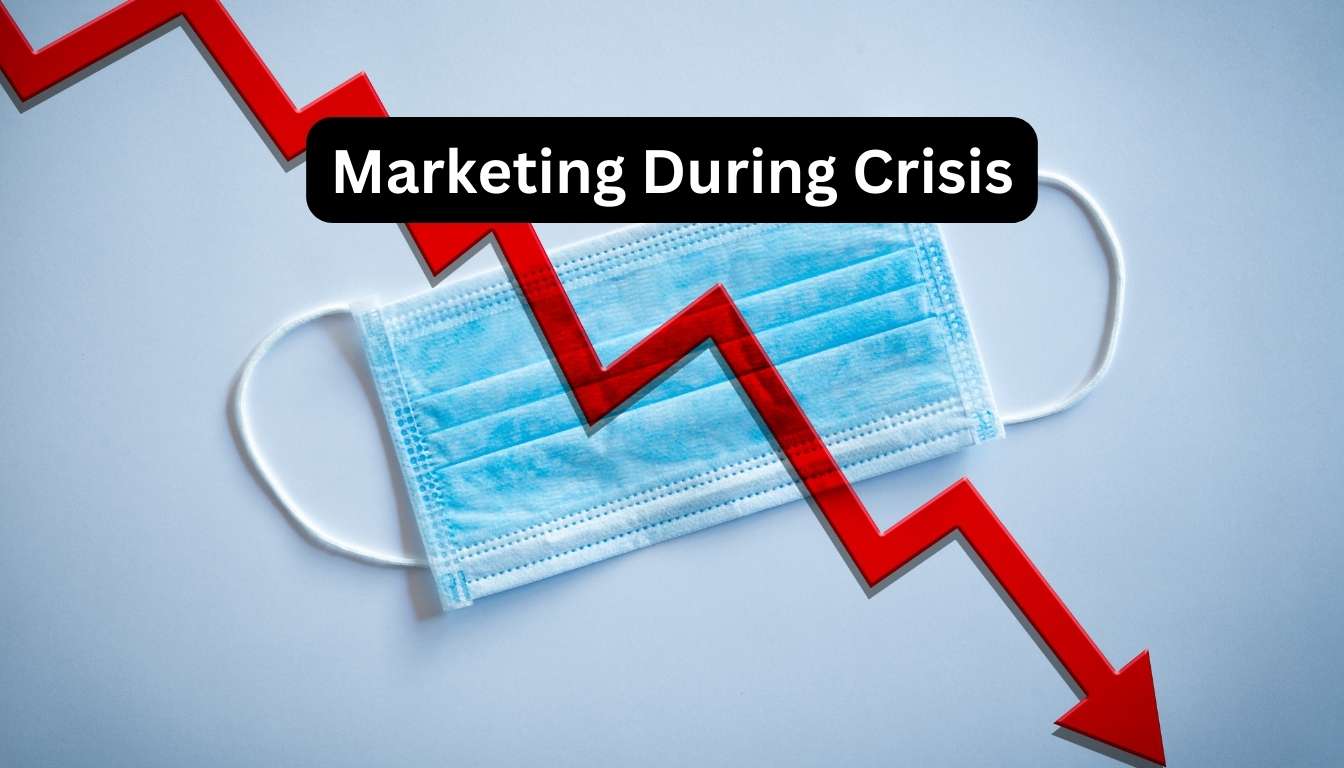In this comprehensive guide, we will explore the nuances between Account Based Marketing (ABM) and Lead Generation. We will examine their differences, discuss the pros and cons of each approach, and help you determine which strategy is best suited for your B2B marketing efforts. By understanding the distinctions between ABM and Lead Generation, you can develop a more precise, accelerated growth strategy that aligns with your business goals.
Key Takeaways:
- Account Based Marketing (ABM) and Lead Generation have different focuses and strategies.
- Lead Generation aims to attract a broad audience, while ABM focuses on targeting specific accounts.
- ABM requires close alignment between sales and marketing teams for personalized content and engagement.
- Lead Generation fills the sales funnel with a large pool of leads, while ABM prioritizes higher-qualified leads.
- Consider your target audience, sales cycle, and budget when choosing between ABM and Lead Generation.
Understanding Lead Generation
Lead generation is the process of identifying and attracting potential customers or leads for your products or services. It involves capturing their contact information and nurturing their interest in order to convert them into paying customers. In a B2B context, leads typically refer to individuals within an organization who have the potential to become customers.
Lead generation can be achieved through various channels such as outbound marketing, which includes strategies like advertisements and cold calls, or inbound marketing, which involves tactics like content marketing and search engine optimization (SEO).
The goal of lead generation is to fill the sales funnel with a large pool of leads, which can then be qualified and converted into sales. However, generating high-quality, qualified leads remains a challenge for many marketers. In fact, less than a third of salespeople consider their marketing team as their best source for leads.
Challenges of Lead Generation
Despite its importance in the B2B sales process, lead generation comes with its fair share of challenges. Here are some common obstacles that marketers face:
- Difficulty in reaching the target audience effectively
- Lack of consistent and high-quality leads
- Longer sales cycle due to lead nurturing requirements
- Inconsistent conversion rates
- Managing and optimizing the sales funnel
Addressing these challenges requires a strategic approach to lead generation, focusing on tactics that attract and engage qualified leads.
The Sales Funnel and Conversion Rates
Lead generation plays a crucial role in filling the sales funnel with potential customers. The sales funnel represents the stages that a lead goes through before becoming a paying customer. The key stages of the sales funnel include:
- Awareness: Creating awareness and attracting leads
- Interest: Nurturing leads and building their interest
- Evaluation: Helping leads evaluate your product or service
- Decision: Assisting leads in making a purchasing decision
Conversion rates, a metric commonly used in lead generation, measure the percentage of leads that progress through each stage of the sales funnel. The higher the conversion rates, the more efficient and effective the lead generation process.
| Stage of Sales Funnel | Conversion Rate (%) |
|---|---|
| Awareness | 10% |
| Interest | 5% |
| Evaluation | 3% |
| Decision | 2% |
The table above illustrates the typical conversion rates at each stage of the sales funnel. It’s important to note that these rates may vary depending on various factors such as industry, target audience, and the effectiveness of lead nurturing efforts.
To improve conversion rates, marketers must focus on strategies that attract highly qualified leads, provide valuable content and experiences, and effectively nurture leads throughout their journey.
The Basics of Account-Based Marketing (ABM)
Account-Based Marketing (ABM) is a strategic approach that focuses on targeting specific accounts or organizations rather than individual leads. With ABM, you identify key accounts that are likely to be interested in your product or service and develop personalized marketing campaigns tailored to their needs and pain points.
ABM requires close alignment between sales and marketing teams, as they work together to engage the identified decision-makers within the target accounts. Personalized content and data management are crucial components of a successful ABM campaign.
Businesses have recognized the advantages of ABM, with companies reporting that as much as 73% of their total revenue is attributed to ABM.
In an ABM approach, the buyer journey is carefully mapped out, ensuring that personalized content is delivered to the right individuals at the right stages of the decision-making process. By targeting accounts instead of individual leads, ABM allows for a more focused and efficient marketing effort.
The Differences Between Lead Generation and ABM
Lead generation and ABM differ in several key areas. While both strategies aim to drive revenue and attract customers, their approaches and tactics vary.
Target Audience
Lead generation focuses on attracting a broad pool of potential customers, casting a wide net to generate as many leads as possible. In contrast, ABM takes a more targeted approach by focusing on specific accounts that are most likely to convert into customers.
Personalization
Lead generation typically relies on content with a relatively generic appeal to attract and engage a wide range of potential customers. ABM, on the other hand, tailors its content and messaging to the specific needs and pain points of the target accounts, ensuring a more personalized approach.
Sales and Marketing Alignment
Lead generation is primarily the responsibility of the marketing team, which generates leads that are then passed on to the sales team for qualification and conversion. In contrast, ABM requires close alignment and collaboration between sales and marketing teams, as they work together to engage and nurture decision-makers within the target accounts.
Metrics
The metrics used to measure success also differ between lead generation and ABM. Lead generation typically focuses on metrics such as the number of leads generated and the conversion rate. ABM, on the other hand, looks at the number of accounts targeted and the revenue generated from those accounts.
By understanding the differences between lead generation and ABM, businesses can make informed decisions about which strategy best suits their goals and target audience.
| Aspect | Lead Generation | Account-Based Marketing (ABM) |
|———————-|—————————————————————————|———————————————————————|
| Target Audience | Broad pool of potential customers | Specific accounts |
| Personalization | Content with relatively generic appeal | Tailored content |
| Sales and Marketing | Marketing generates leads, passed on to sales for qualification and conversion | Close alignment and collaboration between sales and marketing teams |
| Metrics | Number of leads generated, conversion rate | Number of accounts targeted, revenue generated from those accounts |
Pros and Cons of Lead Generation
Lead generation is a widely used strategy in B2B marketing, offering both advantages and disadvantages for businesses. Understanding the pros and cons of lead generation can help you make informed decisions about incorporating this strategy into your marketing efforts.
Pros of Lead Generation
- Broad Reach: Lead generation allows you to reach a broad audience, expanding your potential customer base.
- Consistent Pipeline: It ensures a steady flow of potential customers, filling your sales pipeline consistently.
- Market Insights: Lead generation provides valuable market insights, helping you understand customer preferences and trends.
- Scalability: It is a scalable strategy that can be adjusted to accommodate your business growth.
Cons of Lead Generation
- Quantity over Quality: Lead generation often prioritizes quantity over quality, resulting in lower conversion rates.
- Longer Sales Cycle: It may lead to a longer sales cycle as leads need to be nurtured and qualified before converting into customers.
- Attribution Challenges: Determining which lead generation efforts are driving conversions can be challenging, making it difficult to attribute success to specific activities.
- Managing Diverse Talent: Managing a diverse pool of talents involved in lead generation, such as content creators, advertisers, and sales representatives, can pose a challenge.
Despite these challenges, lead generation remains a valuable strategy for businesses looking to expand their customer base and fill their sales pipeline consistently.
Pros and Cons of Account-Based Marketing
Account-Based Marketing (ABM) offers a personalized approach that comes with its own set of pros and cons. By focusing on a smaller number of accounts, ABM allows for a highly targeted and tailored marketing strategy that yields higher-qualified leads and improved engagement and conversion rates. This personalized approach helps build stronger relationships with potential customers, leading to better communication and collaboration between sales and marketing teams. ABM’s targeted nature also translates to a higher return on investment (ROI) and shorter sales cycles, as the strategy is designed to engage key decision-makers and accelerate the purchase process.
However, it’s important to consider the potential challenges and limitations of ABM. Due to its concentrated focus on a smaller number of accounts, ABM may have a longer sales cycle compared to other strategies that cater to a broader audience. The need for personalized content and resources can also increase costs. Despite these challenges, many businesses find that the benefits of ABM outweigh the drawbacks, as the strategy allows for a more efficient and effective sales process, resulting in improved ROI and revenue generation.
Pros of Account-Based Marketing
- Highly personalized approach
- Higher-qualified leads
- Improved engagement and conversion rates
- Increased collaboration between sales and marketing teams
- Higher ROI
- Shortened sales cycles
Cons of Account-Based Marketing
- Focus on a smaller number of accounts
- Longer sales cycle due to personalized messaging
- Higher costs for personalized content and resources
Choosing the Right Strategy for Your Business
When it comes to selecting the right marketing strategy for your business, there are several factors to consider. One of the key elements to assess is your target audience. If you have a small number of high-value accounts that you want to focus on, Account-Based Marketing (ABM) may be the best approach for you. ABM allows you to personalize your marketing efforts and engage with specific accounts on a deeper level.
On the other hand, if your business caters to a larger audience and you want to cast a wider net, lead generation might be more suitable. Lead generation helps you attract a larger number of potential customers and build a broader customer base.
Another factor to take into account is your sales cycle. If your sales process is longer and requires a more personalized approach, ABM may be a better fit. ABM enables you to tailor your messaging to individual accounts and address their specific pain points, ultimately shortening the sales cycle. On the other hand, if your sales cycle is shorter and your focus is on reaching a large number of leads, lead generation can help you achieve that goal efficiently.
Budget is also an important consideration. ABM, with its emphasis on personalization and targeted campaigns, can be costlier compared to lead generation. Assess your budget and resources to ensure you can execute your chosen strategy effectively.
Ultimately, align your chosen strategy with your business goals. Consider the objectives you want to achieve and evaluate how each strategy can help you reach those goals. Remember that there is no one-size-fits-all approach, and the right strategy for your business will depend on your unique circumstances and objectives.
Integrating Lead Generation and ABM
Lead generation and Account Based Marketing (ABM) can be effectively integrated to maximize results and enhance B2B marketing strategies. When properly executed, this integration enables businesses to benefit from both approaches and achieve a wider reach and deeper connections with potential customers.
Lead generation serves as a valuable tool for identifying new leads that have the potential to become ideal candidates for an ABM approach. By utilizing lead generation techniques, businesses can capture contact information and nurture leads, ultimately qualifying them for ABM campaigns.
| Lead Generation | ABM |
|---|---|
|
|
An integrated approach also allows for content repurposing, where ABM campaigns can be adapted for a general audience as part of an inbound marketing campaign, and vice versa. By repurposing content, businesses can optimize their marketing efforts and extend the reach of their campaigns.
Furthermore, integration promotes data sharing and collaboration between the sales and marketing teams. This collaboration enhances the overall performance of lead generation and ABM initiatives by leveraging shared insights and aligning strategies.
An integrated approach to lead generation and ABM offers several benefits:
- Improved targeting: By combining lead generation and ABM, businesses can identify and engage with leads that are both highly targeted and more likely to convert.
- Enhanced personalization: Integrating both strategies allows for the creation of highly personalized content that appeals to specific audiences, resulting in greater engagement and higher conversion rates.
- Cost-effectiveness: Repurposing content and sharing resources across lead generation and ABM campaigns can lead to cost savings and improved return on investment.
In conclusion, integrating lead generation and ABM can be a powerful approach for businesses looking to enhance their B2B marketing efforts. This integration allows for a broader reach, deeper relationships with potential customers, and optimized campaign performance through shared insights and resources.
Overcoming Challenges and Maximizing Results
Both lead generation and ABM present unique challenges that businesses must address to optimize their marketing performance. Lead generation requires consistent effort to produce engaging content and effectively engage with a large pool of potential leads. On the other hand, ABM demands a significant investment in creating personalized content and allocating the necessary resources.
To overcome these challenges and maximize results, businesses can leverage the power of marketing automation tools. Marketing automation streamlines and automates various marketing activities, enabling businesses to efficiently manage their lead generation efforts and ABM campaigns. These tools provide valuable insights into lead behavior, allowing marketers to identify and target high-value prospects effectively. By automating repetitive tasks and workflows, businesses can optimize their engagement strategies and improve overall campaign performance.
The utilization of marketing automation tools opens up new possibilities for businesses to achieve higher efficiency and effectiveness in their lead generation and ABM initiatives. It enables marketers to deliver timely and relevant content to their target audience, leading to improved engagement and conversion rates. With marketing automation, businesses can monitor and analyze key performance metrics, identify bottlenecks, and make data-driven decisions to optimize their marketing efforts.
In addition to automation, businesses can also explore other tactics to enhance their lead generation and ABM strategies. They can leverage data-driven insights to refine their targeting and personalization strategies, ensuring that their messages align with the needs and pain points of their audience. By fostering closer alignment between sales and marketing teams, businesses can enhance communication and collaboration, resulting in improved lead quality and conversion rates.
Ultimately, by addressing the challenges associated with lead generation and ABM and implementing effective strategies and tools, businesses can maximize their marketing performance and drive better results in terms of lead generation, engagement, and revenue generation.
The Role of Predictive Lead Scoring
Predictive lead scoring plays a crucial role in both lead generation and Account-Based Marketing (ABM) strategies. By leveraging data analysis and algorithms, businesses can assess the likelihood of a lead converting into a customer. This enables more efficient lead qualification and prioritization, allowing companies to focus their resources on leads with the highest potential value.
Predictive lead scoring involves analyzing various factors such as lead behavior, demographics, firmographics, and engagement data to determine the probability of a lead’s conversion. By incorporating machine learning and predictive modeling techniques, businesses can create accurate lead scoring models that dynamically adjust and improve based on new data.
With predictive lead scoring, marketing and sales teams can identify and prioritize the leads that are most likely to convert. This helps optimize resource allocation, streamline sales efforts, and enhance overall sales productivity. By focusing on leads with a higher likelihood of conversion, businesses can improve their lead qualification process and ultimately drive higher conversion rates.
Furthermore, predictive lead scoring aids in identifying signals that indicate a lead’s readiness to purchase. By analyzing data such as website interactions, content consumption patterns, and engagement levels, businesses can identify the key buying signals that suggest a lead is in the later stages of the buying cycle. This allows sales teams to target these leads with more personalized and persuasive messaging, ultimately increasing the chances of conversion.
Implementing predictive lead scoring requires a combination of data analysis expertise, advanced analytics tools, and data integration capabilities. By leveraging sophisticated analytics platforms and CRM systems, businesses can automate the lead scoring process and gain real-time insights into lead quality and conversion potential.

In summary, predictive lead scoring serves as a valuable tool for lead generation and ABM strategies. By utilizing data analysis and predictive modeling techniques, businesses can efficiently prioritize leads, improve lead qualification, and enhance overall sales performance. Incorporating predictive lead scoring into marketing and sales processes can significantly impact revenue generation and drive business growth.
Measuring Success and ROI
Measuring success and ROI is essential when evaluating the effectiveness of both lead generation and Account-Based Marketing (ABM) strategies. By tracking and analyzing key metrics, businesses can gain valuable insights to optimize their marketing efforts and generate maximum returns on investment.
For lead generation, success is typically measured by the number of leads generated and the conversion rate. By assessing the quantity and quality of leads, businesses can determine the effectiveness of their lead generation campaigns. Conversion rates provide insights into how successful these campaigns are in turning leads into customers.
On the other hand, ABM success is measured by the number of accounts targeted and the revenue generated. By focusing on specific high-value accounts, companies can determine the success of their ABM efforts in terms of engagement and revenue generation. This approach allows for a more targeted and personalized approach, resulting in higher conversion rates and increased revenue.
When measuring success and ROI, it’s important to track and analyze other key metrics such as customer acquisition costs, customer lifetime value, and return on investment. These metrics provide a comprehensive view of the effectiveness of both lead generation and ABM strategies.
By leveraging data-driven insights, businesses can make informed decisions to optimize their marketing strategies. Data analysis allows for continuous improvement and refinement of campaigns, ensuring that marketing efforts are aligned with business goals and generating the maximum return on investment. Successful measurement of success and ROI is crucial for maintaining a competitive edge and driving revenue generation in today’s dynamic business environment.
Conclusion
In conclusion, both lead generation and Account-Based Marketing (ABM) are crucial components of a successful B2B marketing strategy. Lead generation aims to attract a wide range of potential customers, filling the sales funnel with leads that can be nurtured and converted. On the other hand, ABM takes a more targeted approach, focusing on specific accounts and delivering personalized content to engage decision-makers.
The choice between lead generation and ABM depends on various factors such as the target audience, sales cycle length, and available budget. Lead generation is ideal for companies with a larger pool of potential customers and shorter sales cycles, while ABM is suitable for businesses with a smaller number of high-value accounts and longer sales cycles.
However, integrating both lead generation and ABM can yield even greater results. By combining the broad reach and consistent pipeline of lead generation with the personalized approach and improved ROI of ABM, businesses can maximize conversions and revenue. This integrated approach allows for a wider reach while building deeper relationships with potential customers.
Ultimately, understanding the differences between lead generation and ABM is essential for developing a comprehensive B2B marketing strategy. By leveraging the strengths of each approach and aligning them with your business goals, you can drive precise, accelerated growth and achieve success in the ever-evolving B2B landscape.
FAQ
What is lead generation?
Lead generation is the process of identifying and attracting potential customers or leads for your products or services through various marketing channels.
How does lead generation differ from Account-Based Marketing (ABM)?
Lead generation aims to attract a broad pool of potential customers, while ABM focuses on targeting specific accounts or organizations.
What is Account-Based Marketing (ABM)?
Account-Based Marketing is a strategic approach that focuses on targeting specific accounts or organizations rather than individual leads.
What are the pros and cons of lead generation?
The advantages of lead generation include reaching a broad audience and providing consistent pipeline filling. However, it often results in lower conversion rates and longer sales cycles.
What are the pros and cons of Account-Based Marketing (ABM)?
The benefits of ABM include a highly personalized approach and better alignment between sales and marketing teams. However, it focuses on a smaller number of accounts and can be more costly.
How do I choose the right strategy for my business?
Factors to consider include your target audience, sales cycle length, and budget. ABM is suitable for smaller high-value accounts, while lead generation works well for companies with a larger customer base and shorter sales cycle.
Can lead generation and ABM be integrated?
Yes, lead generation can help identify potential leads for ABM campaigns, and ABM content can be repurposed for a general audience. Integrating both strategies can maximize results and broaden reach.
What challenges do lead generation and ABM present?
Lead generation requires consistent effort to engage with a large pool of leads, while ABM requires a significant investment in personalized content. Marketing automation tools can help overcome these challenges.
What is predictive lead scoring?
Predictive lead scoring involves using data analysis and algorithms to evaluate the likelihood of a lead becoming a customer, enabling more efficient lead qualification.
How do I measure success and ROI for lead generation and ABM?
Success for lead generation is often measured by the number of leads generated and the conversion rate. ABM success is measured by the number of accounts targeted and the revenue generated.


